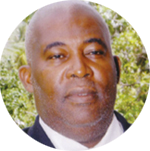
WELCOME students to another week in the Open School for the Second term of the academic or school year 2022 to 2023. The school is open to parents, guardians, teachers, students and members of the public. It is my hope that students will acquire knowledge and skills which will enable them to improve student achievement in Mathematics.
Today’s lesson is the fourth in the series on “Improving student achievement in Mathematics.” At the end of the lesson, students will be able to (1) Explain the phase ‘transfer of knowledge’ (2) Achieve number sense when participating in small group or whole group activity.
In reviewing the third lesson, I discovered an error in the computation as follows:
“The teacher may give students a method of working a concept. For example: Add 102+28 +50. The student, in working the computation, may decide to use another method: 100 + 30+ 50 and get the answer in very quick time, 150. The total should have been 180.
Now as teachers and facilitators of learning, we have to be able to decide when our students have made a genuine error or they have not fully understood the concept. In the latter, the teacher should review the concept taught.
In lesson 3, I began by indicating that teachers and facilitators of learning must be open to student solution methods and interactions. Very importantly, teachers must also be aware of how students construct knowledge.
Another research finding indicates that teachers and facilitators of learning, should structure instruction around carefully chosen problems, allowing them to interest classmates when solving problems.
Indeed, another very important point which was emphasized was that teachers should concentrate on providing opportunities for students to interact in problem rich situations.
The point which was emphasized in lesson 3 is that research finding have shown consistently, that using small groups of students to work on activities, problems and assignments can increase student achievement in Mathematics.
Now the final point that was drawn to your attention was that research findings have shown consistently, that using small groups of students to work on activities, problems and assignments can increase student achievement in Mathematics.
In today’s lesson, we will learn that whole class discussion following individual and small group work improves student achievement.
It is very important that whole class discussion follow student work on problem -solving activities.
We can see clearly now that small group learning is just as effective as whole class discussion or learning. In fact, in the classroom situation, it is important that whole-class discussion follow student work on problem-solving activities. The discussion should really be a summary of the group’s conclusions in which key ideas which were agreed upon would be brought forward or reported.
Now whole-group or whole-class discussion can also be an effective diagnostic tool to determine the depth of the students understanding and identifying misunderstandings or misconceptions.
Very importantly, the small group and whole group situation would allow for the students who are shy or soft-spoken to ‘shine.’ That is, to get out of their shyness and make contributions to the learning processes.
During my teaching career, I have seen many students who were very shy, reclusive or withdrawn come to fore and become very friendly, sociable and in the front-line of class discussions and reporting.
We come now to Number Sense. It is important to understand that teaching Mathematics with a focus on number sense encourages students to become problem solvers in a wide variety of situations and to view Mathematics as a discipline in which thinking is important.
And this is one of the occasions that critical thinking is demanded. But what is critical thinking? Critical thinking is a kind of thinking in which a person questions, analyse, interpret, evaluate and make a judgement about what a person has read, heard, said or written.
Teaching of number sense could lead students to transfer knowledge to a wide variety of Mathematical topics,
For example, the understanding of addition of two and three digit numbers could help students transfer that knowledge to the concept of finding averages of two and three digit numbers; money, time, measurement and so on.
As teachers and facilitators of learning develop strategies to teach number sense, they should strongly consider moving beyond a unit-skills approach to a more integrated approach. By a unit-skill approach I mean that the teacher or facilitator of learning goes in-depth or spends a lot of time on a single skill in isolation to several other skills which could be covered in other areas, which would lead the students to develop number sense.
For example, in teaching addition of two-digit numbers, the teacher could select one or two-step problems which would allow the students or learners to solve a problem involving addition of two-digit numbers.
It has always amazed me how quickly some students could develop a skill in a certain concept and then transfer that knowledge in a variety of other areas in Mathematics or other subject areas for that matter, English Language, science etc.
Now two questions for you: (1) In your own words, explain the phrase” transfer of knowledge.” (2) How can a student achieve in participating in a small group or whole class activity?









